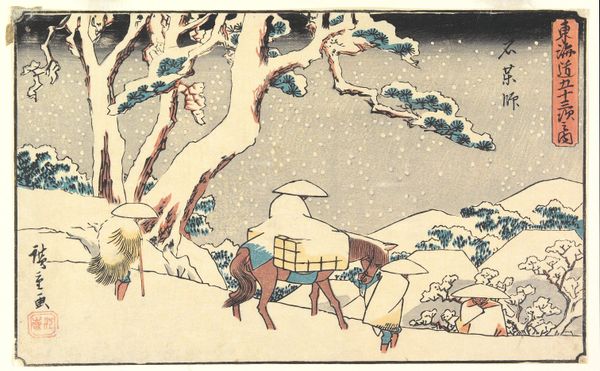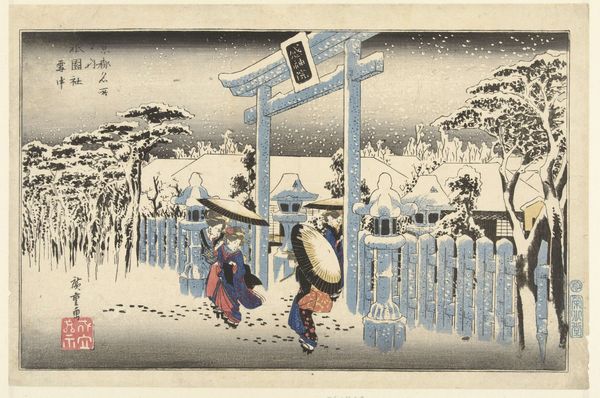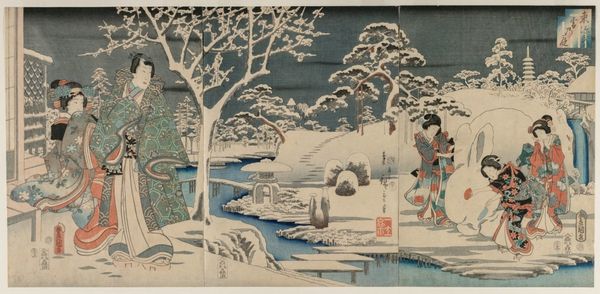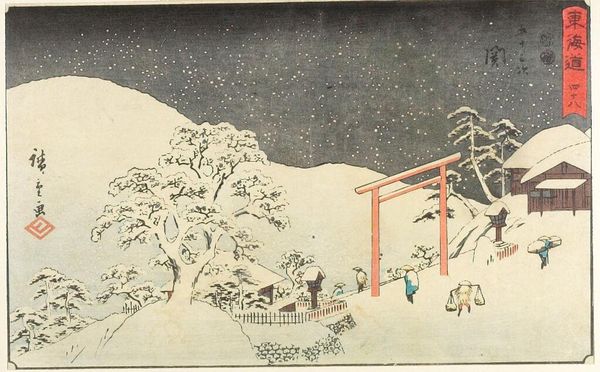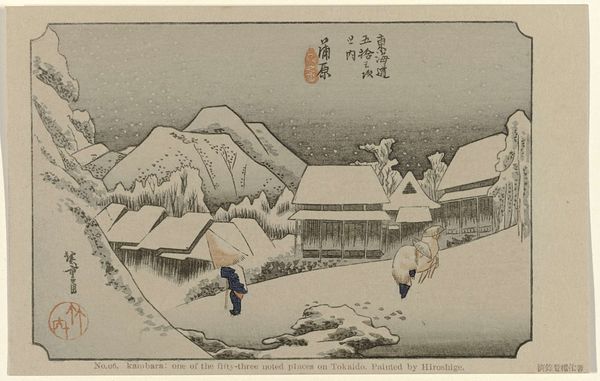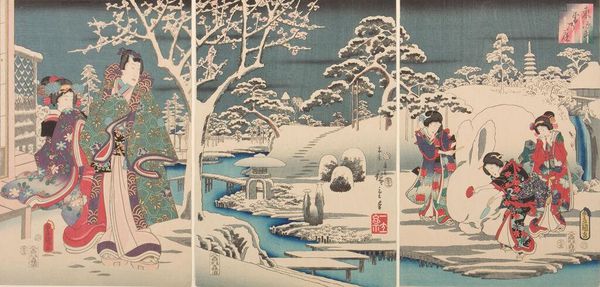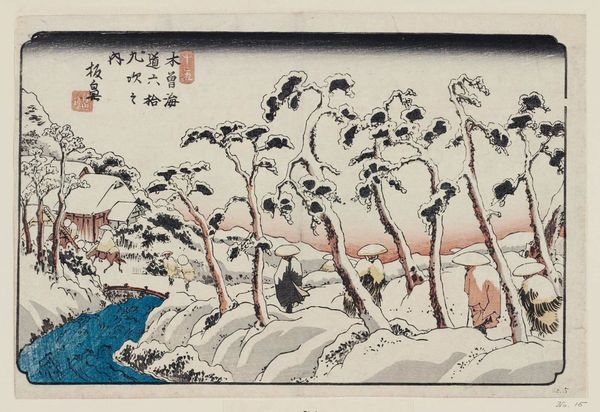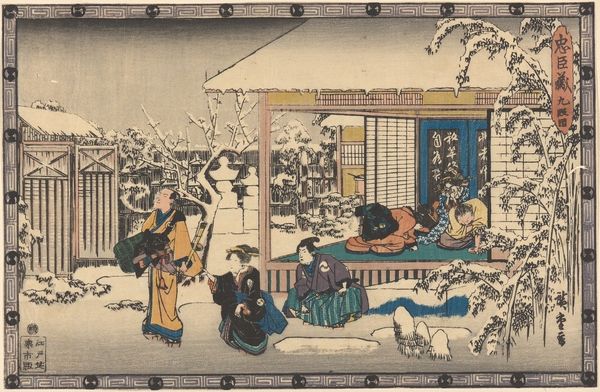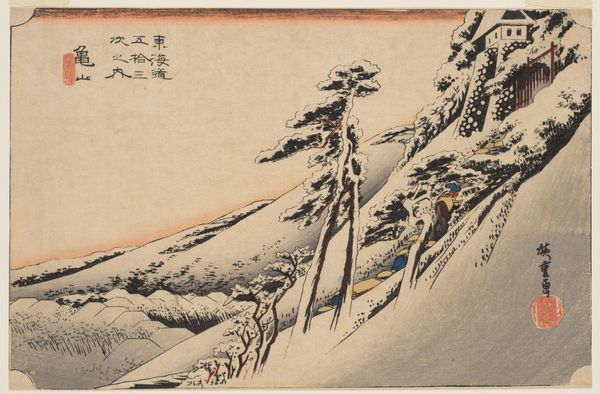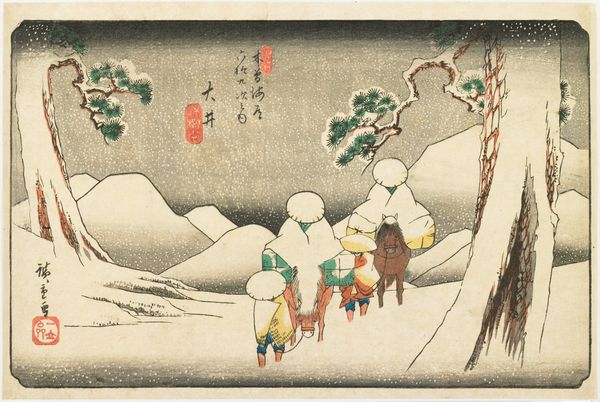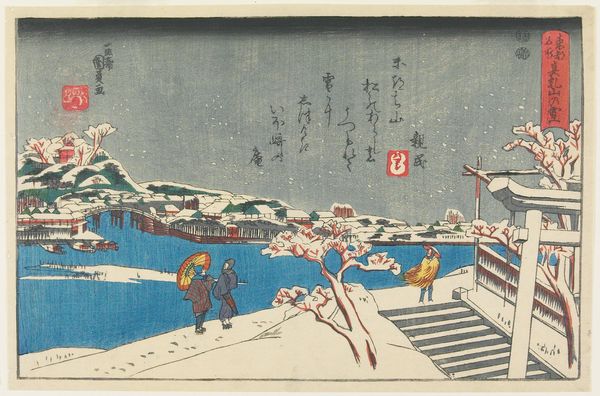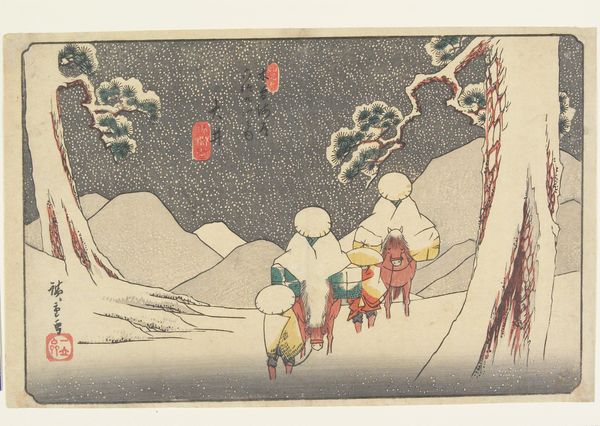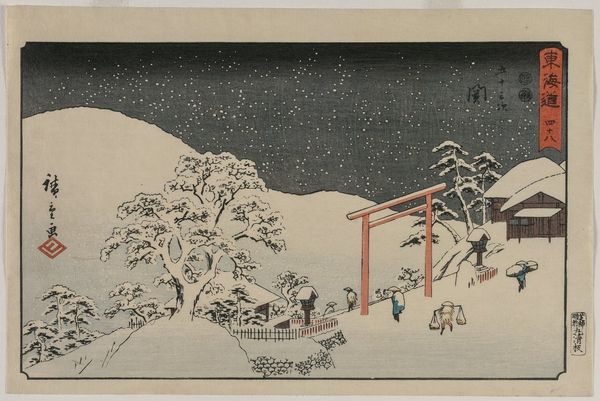
Osho, from The Twenty-four Paragons of Filial Piety (NijÅ«shikÅ)
0:00
0:00
Copyright: CC0 1.0
Curator: Here we have Utagawa Kuniyoshi’s woodblock print, "Osho, from The Twenty-four Paragons of Filial Piety," created sometime between 1835 and 1836. The scene is quite striking; a figure reclines on a rock as others look on in distress. Editor: Yes, the texture of the woodblock is incredibly apparent in the churning waves and cloud formations. You can really feel the pressure of the block against the paper, see the fibers. Curator: I'm immediately drawn to the narrative Kuniyoshi presents. The story of Osho is one of self-sacrifice and devotion to family, set against a backdrop of societal expectations and familial duty. Editor: It's fascinating how the artist uses the materiality to convey the story, I mean look at the composition itself, the heavy lines and the vibrant colors suggesting a dynamic, perhaps even disruptive, interpretation of the subject. Curator: Right, this piece really makes us consider the artist's own position within the cultural discourse of 19th-century Japan. Editor: Indeed, and these materials speak volumes about the social and political context surrounding its production. Curator: I find Kuniyoshi's interpretation of filial piety both respectful and subtly subversive. Editor: A great example of how materials and production methods can reinforce and question cultural values. Curator: A powerful reminder that art is never created in a vacuum. Editor: It makes you consider the very physical and material nature of devotion itself.
Comments
No comments
Be the first to comment and join the conversation on the ultimate creative platform.
